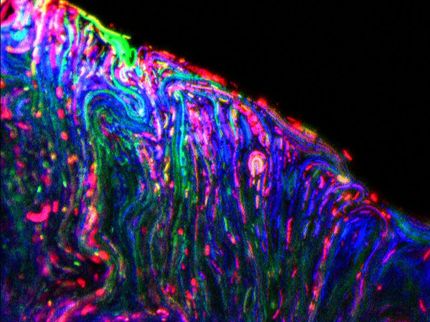Flue gas as a raw material – Newly discovered microorganisms utilise CO2 particularly well
Tailor-made specialist micro-organisms directly “feed” on CO2-containing flue gases from lignitefired power stations and even grow at temperatures of 60 degrees centigrade. This is the very promising initial result of a research project run in co-operation by RWE Power and BRAIN AG.
The electricity producer and the biotechnology company kicked off their co-operation at the Niederaussem power station exactly two years ago. The joint project aims at converting CO2 into biomass or directly into secondary raw materials with the help of micro-organisms bred to explore innovative CO2 conversion and synthesis pathways. Ultimately, biomass and industrially usable products emerge such as new bio-materials, bio-plastics and intermediate chemical products. Potential applications are being investigated for these products, e.g. as construction and insulation materials or in the production of fine and speciality chemicals - or possibly even
bulk chemicals.
Researchers at BRAIN screened their own BioArchive as well as samples taken straight from the flue of the Niederaussem BoA 1 power station1 for micro-organisms able to grow in flue gas conditions utilising CO2. All in all, they took a closer look at more than 3,000 micro-organisms. Only one out of every three qualified for further investigation. In a next step, the scientists identified and characterised the most efficient utilisers of the greenhouse gas. By now, the researchers have selected 29 candidates with particularly convincing growth properties – of which ten were completely unknown or hitherto undescribed as was determined by the genetic characterization of the micro-organisms.
Most read news
Organizations
Other news from the department research and development

Get the life science industry in your inbox
By submitting this form you agree that LUMITOS AG will send you the newsletter(s) selected above by email. Your data will not be passed on to third parties. Your data will be stored and processed in accordance with our data protection regulations. LUMITOS may contact you by email for the purpose of advertising or market and opinion surveys. You can revoke your consent at any time without giving reasons to LUMITOS AG, Ernst-Augustin-Str. 2, 12489 Berlin, Germany or by e-mail at revoke@lumitos.com with effect for the future. In addition, each email contains a link to unsubscribe from the corresponding newsletter.























































